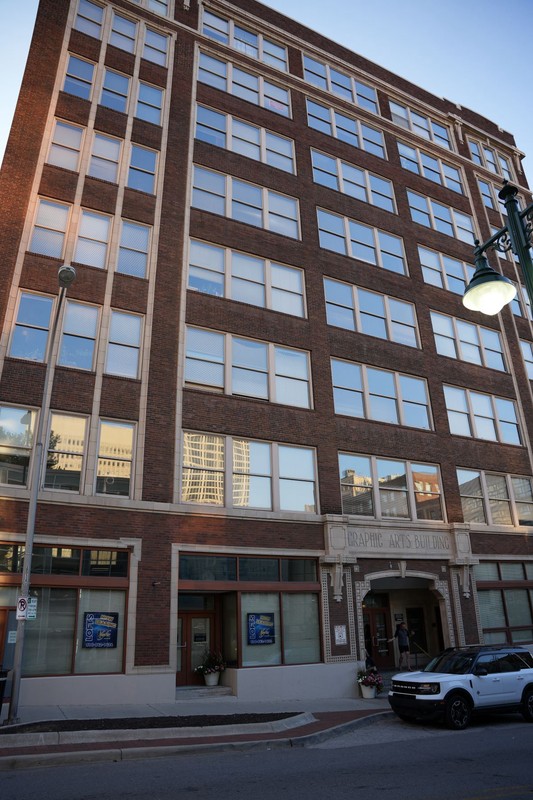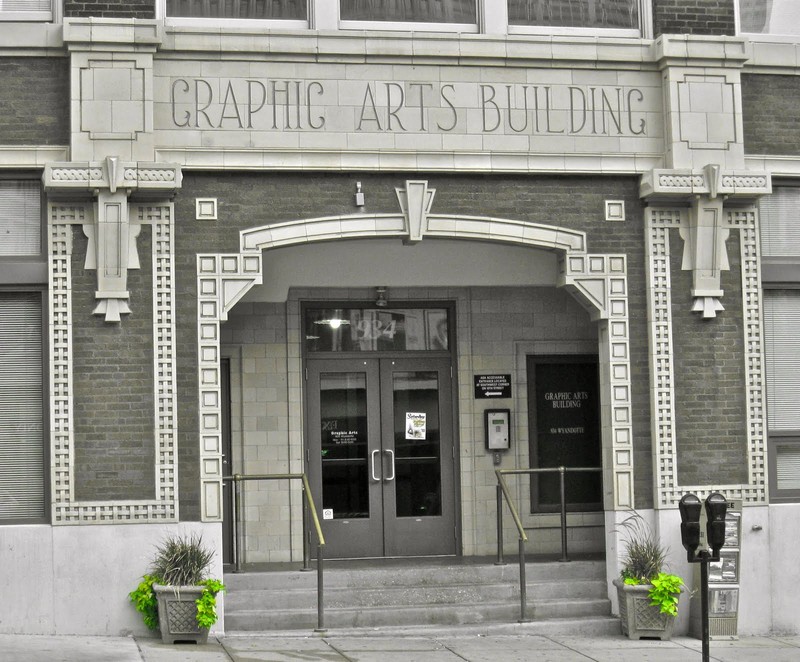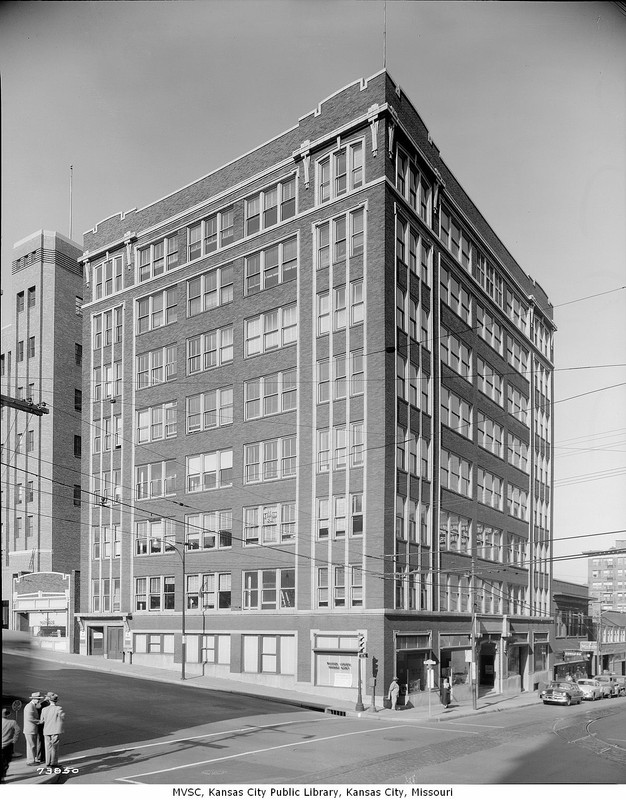Graphic Arts Building
Introduction
Text-to-speech Audio
The Graphic Arts Building (circa 1915) served as the headquarters for the Kansas City Graphic Arts Organization, which acted as an anchor for the graphic arts industry during the pre-tech era. Various companies related to publishing and graphic arts, producing or using such items as ink, printing presses, steel and copper plate engraving, typesetting, and lithography, occupied the Graphic Arts Building or operated businesses within a few blocks of the historic structure because it made financial sense for companies with related interests to stay in close proximity to each other.
Images
Graphic Arts Building. Photo taken in 2022, 107 years after the building was constructed

2010 photo of the Graphic Arts Building entryway

1950 image of the Graphic Carts Building

Backstory and Context
Text-to-speech Audio
Architect Samuel B. Tarbet (c. 1871-1945) designed the Graphic Arts Building as a center for commercial printing and its associated trades. Tarbet spent most of his career as an independent architect, developing a considerable number of buildings (some officially deemed landmarks) in the Kansas City area, including various residential, commercial, and religious facilities. For the Graphic Arts Building, Tarbet needed to consider the unique needs of printing operations, such as ten-ton printing presses on any or all floors. Fire safety also proved paramount, given the abundance of paper and flammable products. Hence, he incorporated a superior sprinkler system comprising an extra large roof tank with a water holding capacity of 100 tons into the design. In addition to pragmatic concerns, Tarbet provided aesthetic appeal. For example, he used Hy-Tex Bricks, a specialized brick used in prominent buildings throughout the United States, such as the Anheuser-Busch Brew House (1891) in St. Louis, the Willard Hotel (1901) in Washington, D.C., and the Chrysler Building (1929) in New York, to name a few. Crews worked in three shifts around the clock to turn Tarbet's design into a final product; the Graphics Arts Building opened in 1915.
In the late nineteenth and early twentieth centuries, businesses felt it prudent to build offices, factories, and warehouses near related companies, which allowed for an efficient and inexpensive way of moving supplies between vendors. For more than six decades, influential businesses within the graphic arts industry operated in a downtown section comprising 6th to 14th Streets and Broadway to Main, with the Graphic Arts Building sitting within the district's central location.
The building's diverse spectrum of tenants, from paper and ink suppliers to printers and engravers to photographers and filmmakers, attests to the cooperative nature that proved vital to the industry's success. The Thompson Paper Company, a fifth-generation Kansas City firm, served as one of the Graphic Arts Building's first occupants. Several customers of Thompson Paper Company became major icons in Kansas City's history, including Walt Disney and J.C. Hall, founder of Hallmark Cards.
Another noteworthy tenant of the Graphic Arts Building was the Graphic Arts Organization of Kansas City, which moved to the now-historic building in 1916. The organization represented approximately 3,000 people employed in the graphic arts industry within the Kansas City area, composed of representative firms in all lines of the printing industry. Its activities include business counsel; legal, credit, and collection services; employment and organization matters; educational work; accounting, cost finding, and statistical activities; and cooperation in all matters related to the Industry as a whole. During the Kansas City Industrial Exposition of 1923, the organization was directly involved with the event. The organization provided extensive advertisement for more than 125 affiliated publishing and graphic arts enterprises. The Graphic Arts Organization occupied offices on the eighth floor of the Graphic Arts Building, serving as an anchor for the local graphic arts industry.
In addition to the amenities provided through Tarbet's design, Mr. Thompson installed an incinerator for disposing of paper. However, Thompson and the tenants stopped using it in the mid-1920s because the number of automobile owners grew substantially, and the owners of said vehicles complained about the debris of cinders and ash that covered their cars on the parking lots surrounding the Graphic Arts Building.
The building underwent significant renovations during the 1960s. Sill, by the 1970s, typesetters, stationers and photographers remained among the buildings' tenants, along with several art studios and a film company. In recent years, after being used by Park University, a 2005 renovation project resulted in the historic building's transition into a residential complex: Graphic Arts Lofts.
Sources
Conrads, David. "Kansas City Board Of Trade." Kansas City Public Library: Pendergast Years. pendergastkc.org. Accessed September 4, 2022. https://pendergastkc.org/article/buildings-orgs/kansas-city-board-trade.
Millstein, Cydney E. and Mary Ann Warfield. "Registration Form: Graphic Arts Building." National Register of Historic Places. mostateparks.com. 2005. https://mostateparks.com/sites/mostateparks/files/Graphic%20Arts%20Bldg.pdf.
"A Rich History and Culture." Historic Kansas City. historickansascity.org. Accessed September 4, 2022. https://www.historickansascity.org/kansas-city/.
Photo by David Trowbridge
Kansas City Daily Photo (blog): http://kcdailydosephotos.blogspot.com/2010/09/graphic-arts-building.html
KC Public Library, kchistory.org: https://kchistory.org/image/graphic-arts-building
